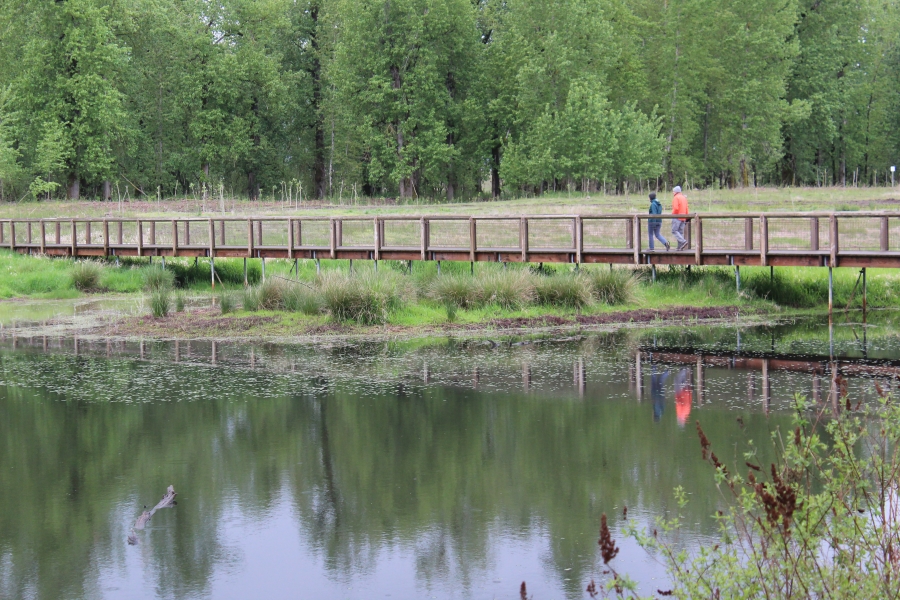The U.S. Fish and Wildlife Service (USFW) and the Lower Columbia Estuary Partnership closed the refuge to the public in June 2020 to begin work on a restoration project that eventually created more than 100 acres of wetland, reforested 250 acres of riparian habitat, planted more than 500,000 trees and shrubs, reconnected 965 acres of Columbia River floodplain, added 1.1 miles of trails and benefitted salmon in Gibbons Creek.
“It’s the largest habitat restoration project ever completed on the lower Columbia River,” said U.S. Fish and Wildlife acting Pacific Region assistant director Christine Ogura. “Last fall, we had salmon spawning in the creek for the first time in decades. We are now seeing year-round access for salmon and lamprey; greater resting areas for migratory waterfowl; and new experiences for children and families to explore. This refuge is an oasis for both people and wildlife. We’re really excited to open the new trails and parking lot and to welcome visitors back to Steigerwald Lake National Wildlife Refuge.”
A variety of local, regional and national organizations, including the cities of Camas and Washougal, the Lower Columbia Estuary Partnership, the Port of Camas-Washougal, the Washougal School District, Friends of the Columbia Gorge, the U.S. Army Corps of Engineers, Burlington Northern Santa Fe Railroad, the Bonneville Power Administration (BPA), USFW, the Washington Department of Transportation and the Columbia Gorge Refuge Stewards, partnered together to complete the $32 million project.
“We all have different missions, but through our shared community and conservation visions, we accomplished something none of us could’ve done alone,” said Ogura, who added that the project will create more than 550 local jobs and contribute more than $75 million to the local economy. “You will not find a better example of collaboration, conservation and community than you’ll find right here at Steigerwald Lake National Wildlife Refuge.”
Elaine Placido, the executive director of the Portland-based Lower Columbia Estuary Partnership, called the project a “phenomenal accomplishment” and a “crowning achievement.”





